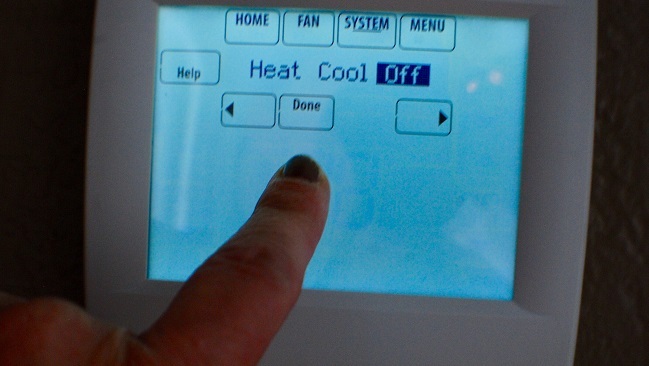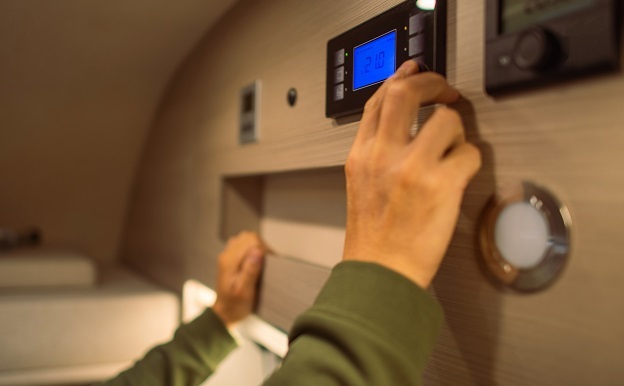
 Data Structure
Data Structure Networking
Networking RDBMS
RDBMS Operating System
Operating System Java
Java MS Excel
MS Excel iOS
iOS HTML
HTML CSS
CSS Android
Android Python
Python C Programming
C Programming C++
C++ C#
C# MongoDB
MongoDB MySQL
MySQL Javascript
Javascript PHP
PHP
- Selected Reading
- UPSC IAS Exams Notes
- Developer's Best Practices
- Questions and Answers
- Effective Resume Writing
- HR Interview Questions
- Computer Glossary
- Who is Who
What is the full form of EATC?
Introduction
Electronic Automatic Temperature Control (EATC) is to oversee and maintain the correct temperature in the passenger compartment, modern technology is utilized in automobiles. Automatic monitoring and alterations of Heating, Ventilation, and Air Conditioning (HVAC) systems are performed by EATC systems, which make use of electronics control devices, sensors, and motors.

It's no longer necessary to manually adjust fan speeds or temperature environments. The technology will continuously monitor the environment and make adjustments as necessary to maintain the focus on level of comfort. Passengers as well as drivers can select the preferred cabin temperature using EATC.
EATC systems utilize several kinds of sensors, including solar load sensors, cabin temperature sensors, and ambient temperature sensors, to gather information about the environment. When necessary, the control module evaluates these inputs and gives the HVAC system instructions to adjust the humidity, speed of the air, and other factors.
How EATC works?
EATC (Electronic Automatic Temperature Control) employs a range of sensors that are control modules, and motors to regulate the temperature inside a vehicle. Here is a thorough description of the way EATC often works:
Sensor inputs EATC systems employ a range of sensors to gather data about the cabin and its surroundings. The sensors that are used include those for the cabin, the sun's rays, outside the environment, and occasionally humidity levels. In addition to other significant factors, they provide information on the current climate, humidity, temperature, and volume of solar.
Control Module A control module is a computerized device that receives sensor inputs and processes the data to make choices based on preset parameters. In order to analyze sensor inputs and decide on the best course of action to reach the required temperature, the control module employs algorithms and programming.
Control of the HVAC System To make modifications, the control module talks to the HVAC system in the car. The fan speed, air distribution, and recirculation settings, as well as the heating and cooling systems, are among the components that it can control.
Feedback Loop The EATC system constantly checks the cabin's temperature and compares it to the ideal level. The HVAC system settings are modified by the control module if there are mismatches. To cool down the interior of the vehicle, for instance, the system may turn on the air cooling and enhance the speed of the fan if the vehicle's temperature is too high.
Actuator Control In order to perform the required changes, the HVAC system's numerous actuators receive orders from the control module. The blower fan, the blend doors (which alter the mixture of hot and cold air), and the air distribution vents are all under the control of these actuators.
Constantly Monitoring Environmental Conditions and Cabin Temperature are Constantly Monitored by the EATC System. For the purpose of maintaining the appropriate temperature, it adjusts the HVAC system's settings instantaneously. To maximize comfort, it may also take into account variables like the amount of sunshine, fluctuations in the outside temperature, and the number of individuals living inside.
EATC systems offer automatic and accurate temperature management, guaranteeing a comfortable atmosphere within the car cabin. They do this by combining sensor inputs, control algorithms, and actuator control.
Advantages of EATC
The advantages of Electronic Automatic Temperature Control (EATC) improve the overall comfort and efficiency of passengers in vehicles. Here are a few of EATC's main advantages:
Accurate and precise temperature Accurate and precise temperature adjustment is provided within the car cabin using EATC systems. The target temperature is maintained constantly because EATC continuously monitors the cabin's temperature and makes the required changes. Due to this, travelers may experience the highest level of comfort regardless of the weather outside.
Automation EATC does away with the necessity for manual temperature adjustments. The technology controls the HVAC settings automatically after the appropriate temperature has been selected. Being able to focus on the road or other activities without continually adjusting the temperature settings makes this hands-off operation more convenient for the driver as well as the passenger.
Enhancing Passenger Comfort The automatic operation of EATC enhances passenger comfort. A pleasant climate within the vehicle is ensured by the system, which modifies fan speed, airflow distribution, and heating or cooling settings based on current conditions. Having this capability is very useful while driving over long distances or in bad weather.
Temperature Stability The interior temperature of the car is stable because of the EATC. To keep the climate constant and cozy, the system reacts quickly to variations in the outside temperature, sunshine intensity, and other variables. A comfortable trip without sudden temperature changes is offered to passengers.
Energy Efficient Design (EATC) EATC systems are made to maximize energy use. The technology reduces energy waste by modifying HVAC settings depending on real-time inputs and occupancy situations. By effectively using the resources at hand, this not only helps cut down on gasoline usage, but also encourages environmentally beneficial habits.
Personalization Individual preferences for temperature are frequently supported by EATC features. Individual passengers' comfort requirements can be met by setting different temperatures for various areas of the vehicle. Everyone in the car will be able to experience the appropriate level of thermal comfort due to this modification work.
Applications of EATC
Electronic Automatic Temperature Control (EATC) has several industrial and environmental uses. Here is a basic explanation of some applications such as

Automotive Industry To control interior temperature and give passengers the best possible level of comfort, EATC is frequently used in automobiles, trucks, and other vehicles. From limited vehicles to premium cars, it is a common element in many contemporary vehicles. No matter the weather outside, EATC makes sure that passengers have a pleasant journey.
Commercial Vehicles Buses, coaches, and commercial trucks are just a few examples of the commercial vehicles that make use of EATC. Long-distance travel is a common function of these vehicles, and EATC contributes to keeping the occupants comfortable. The environment for passengers or cargo is improved, and the driver's comfort is enhanced.
Marine Applications To regulate the temperature in cabins and other enclosed places aboard boats and ships, EATC is used. It contributes to the crew and passengers' comfort during lengthy periods at sea by maintaining a pleasant environment.
Industrial Environments Where temperature regulation is essential, EATC finds applications. It may be used in factories, server rooms, labs, and other buildings to maintain accurate temperatures, assuring the best performance of machinery or procedures.
Conclusion
In conclusion, Electronic Automatic Temperature Control (EATC) systems offer accurate and automatic temperature adjustment, improving convenience as well as comfort for users. While continually monitoring and modifying the HVAC settings, EATC guarantees uniform and individualized comfort whether in cars, airplanes, buildings, or industrial environments. Among its advantages are accurate temperature control, automatic operation, improved comfort, constant temperature, energy efficiency, and personalisation. Modern cars now come standard with EATC, which also has uses in a number of sectors where temperature regulation is important.
FAQs
Q1. Can EATC reduce energy use?
Ans: In order to maximize energy efficiency, EATC modifies HVAC settings depending on current conditions.
Q2. Is EATC personalizable?
Ans: Yes, EATC frequently enables customized comfort for different people in the vehicle or building by allowing for distinct temperature preferences.
Q3. Is EATC a regular component of cars?
Ans: Yes, EATC, which offers automatic temperature management for greater comfort, is gradually becoming a common technology in contemporary automobiles.

